US daily temperature records past, present, and future
- PMID: 27872294
- PMCID: PMC5150363
- DOI: 10.1073/pnas.1606117113
US daily temperature records past, present, and future
Abstract
Observed temperature extremes over the continental United States can be represented by the ratio of daily record high temperatures to daily record low minimum temperatures, and this ratio has increased to a value of about 2 to 1, averaged over the first decade of the 21st century, albeit with large interannual variability. Two different versions of a global coupled climate model (CCSM4), as well as 23 other coupled model intercomparison project phase 5 (CMIP5) models, show larger values of this ratio than observations, mainly as a result of greater numbers of record highs since the 1980s compared with observations. This is partly because of the "warm 1930s" in the observations, which made it more difficult to set record highs later in the century, and partly because of a trend toward less rainfall and reduced evapotranspiration in the model versions compared with observations. We compute future projections of this ratio on the basis of its estimated dependence on mean temperature increase, which we find robustly at play in both observations and simulations. The use of this relation also has the advantage of removing dependence of a projection on a specific scenario. An empirical projection of the ratio of record highs to record lows is obtained from the nonlinear relationship in observations from 1930 to 2015, thus correcting downward the likely biased future projections of the model. For example, for a 3 °C warming in US temperatures, the ratio of record highs to lows is projected to be ∼15 ± 8 compared to the present average ratio of just over 2.
Keywords: global warming; large ensemble; temperature extremes; temperature records.
Conflict of interest statement
The authors declare no conflict of interest.
Figures




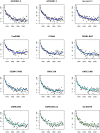
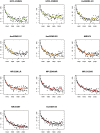


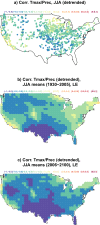
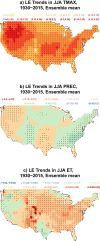
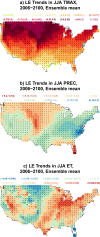
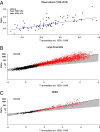
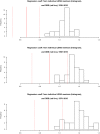
References
-
- Meehl GA, Tebaldi C, Walton G, Easterling D, McDaniel L. The relative increase of record high maximum temperatures compared to record low minimum temperatures in the U.S. Geophys Res Lett. 2009;36:L23701.
-
- Rowe CM, Derry LE. Trends in record-breaking temperatures for the conterminous United States. Geophys Res Lett. 2012;39:L16703.
-
- Beniston M. Ratios of record high to record low temperatures in Europe exhibit sharp increases since 2000 despite a slowdown in the rise of mean temperatures. Clim Change. 2015;129:225–237.
-
- Trewin BC, Vermont H. Changes in the frequency of record temperatures in Australia, 1957-2009. Aust Meteorol Oceanogr J. 2010;60:113–119.
Publication types
LinkOut - more resources
Full Text Sources
Other Literature Sources
Miscellaneous

